Form SSA-3368-BK (11-2020) UF |
|
Discontinue Prior Editions |
Page 1 of 15 |
Social Security Administration |
OMB No. 0960-0579 |
DISABILITY REPORT - ADULT
PLEASE READ THIS INFORMATION BEFORE COMPLETING THIS REPORT
The information you give us on this report will be used by the office that makes the disability decision on your disability claim. Completing this report accurately and completely will help us expedite your claim. Please complete as much of the report as you can.
IF YOU NEED HELP
You can get help from other people, such as a friend or family member. Please do not ask your healthcare provider to complete this report. If you cannot complete the report, a Social Security Representative will assist you. If you have an appointment, please have the completed report ready when we contact you. If we ask you to do so, please mail the completed report to us ahead of time.
Note: If you are assisting someone else with this report, please answer the questions as if that person were completing the report.
HOW TO COMPLETE THIS REPORT
•Print or write clearly.
•Include a ZIP or postal code with each address.
•Provide complete phone numbers including area code. If a phone number is outside the United States, also provide International Direct Dialing (IDD) code and country code.
•If you cannot remember the names and addresses of your healthcare providers, you may be able to get that information from the telephone book, Internet, medical bills, prescriptions, or prescription medicine containers.
•ANSWER EVERY QUESTION, unless the report indicates otherwise. If you do not know an answer, or the answer is "none" or "does not apply," please write: "don't know," or "none," or "does not apply."
•Be sure to explain an answer if the question asks for an explanation, or if you want to give additional information.
•If you need more space to answer any question, please use Section 11 - Remarks on the last page to finish your answer. Write the number of the question you are answering.
YOUR MEDICAL RECORDS
If you have any of your medical records, send or bring them to our office with this completed report. Please tell us if you want to keep your records so we can return them to you. If you are having an interview in our office, bring your medical records, your prescription medicine containers (if available), and the completed report with you.
YOU DO NOT NEED TO ASK DOCTORS OR HOSPITALS FOR ANY MEDICAL RECORDS THAT YOU DO NOT ALREADY HAVE. With your permission, we will request your records. The information that you give us on this report tells us where to request your medical and other records.
Form SSA-3368-BK (11-2020) UF |
Page 2 of 15 |
WHAT WE MEAN BY "DISABILITY"
“Disability” under Social Security is based on your inability to work. For purposes of this claim, we want you to understand that “disability” means you are unable to work as defined by the Social Security Act. You will be considered disabled if you are unable to do any kind of work for which you are suited and if your disability is expected to last (or has lasted) for at least a year or is expected to result in death. So when we ask “when did you become unable to work,” we are asking when you became disabled as defined by the Social Security Act.
Privacy Act Statement
Collection and Use of Personal Information
Sections 205(a), 223(d), 1614(a), and 1631 of the Social Security Act, as amended, allows us to collect this information. Furnishing us this information is voluntary. However, failing to provide all or part of the information may prevent an accurate and timely decision on any claim filed.
We will use the information to determine eligibility for benefits. We may also share your information for the following purposes, called routine uses:
•To contractors and other Federal agencies, as necessary, for the purpose of assisting the Social Security Administration (SSA) in the efficient administration of its programs; and
•To applicants, claimants, prospective applicants or claimants, other than the data subject, their authorized representatives or representative payees to the extent necessary to pursue Social Security claims and to representative payees when the information pertains to individuals for whom they serve as representative payees, for the purpose of assisting SSA in administering its representative payment responsibilities under the Act and assisting the representative payees in performing their duties as payees, including receiving and accounting for benefits for individuals for whom they serve as payees.
In addition, we may share this information in accordance with the Privacy Act and other Federal laws. For example, where authorized, we may use and disclose this information in computer matching programs, in which our records are compared with other records to establish or verify a person's eligibility for Federal benefit programs and for repayment of incorrect or delinquent debts under these programs.
A list of additional routine uses is available in our Privacy Act Systems of Records Notice (SORN) 60-0089, entitled Claims Folders System, as published in the Federal Register (FR) on April 1, 2003, at 68 FR 15784, and 60-0320, entitled Electronic Disability Claim File, as published in the FR on December 22, 2003, at 68 FR 71210. Additional information, and a full listing of all of our SORNs, is available on our website at www.ssa.gov/privacy.
Paperwork Reduction Act Statement
This information collection meets the requirements of 44 U.S.C. § 3507, as amended by section 2 of the Paperwork Reduction Act of 1995. You do not need to answer these questions unless we display a valid Office of Management and Budget control number. We estimate that it will take about 90 minutes to read the instructions, gather the facts, and answer the questions. SEND OR BRING THE COMPLETED FORM
TO YOUR LOCAL SOCIAL SECURITY OFFICE. You can find your local Social Security office through SSA's website at www.socialsecurity.gov. Offices are also listed under U. S. Government agencies in your telephone directory or you may call Social Security at 1-800-772-1213 (TTY
1-800-325-0778). You may send comments regarding this burden estimate or any other aspect of this collection, including suggestions for reducing this burden to: SSA, 6401 Security Blvd, Baltimore, MD 21235-6401. Send only comments relating to our time estimate to this address, not the completed form.
AFTER COMPLETING THIS REPORT, REMOVE THIS SHEET AND KEEP IT FOR YOUR RECORDS
Form SSA-3368-BK (11-2020) UF |
Page 3 of 15 |
For SSA Use Only- Do not write in this box. Related SSN
Number Holder
Anyone who makes or causes to be made a false statement or representation of material fact for use in determining a payment under the Social Security Act, or knowingly conceals or fails to disclose an event with an intent to affect an initial or continued right to payment, commits a crime punishable under Federal law by fine, imprisonment, or both, and may be subject to administrative sanctions.
If you are filling out this report for someone else, please provide information about him or her. When a question refers to "you" or "your," it refers to the person who is applying for disability benefits.
SECTION 1 - INFORMATION ABOUT THE DISABLED PERSON
1.A. Name (First, Middle Initial, Last) |
1.B. Social Security Number |
1.C. Mailing Address (Street or PO Box) Include apartment number or unit (if applicable).
ZIP/Postal Code Country (If not USA)
1.E. Daytime Phone Number, including area code, and the IDD and country codes if you live outside the |
USA |
Phone number |

 Check this box if you do not have a phone or a number where we can leave a message. 1.F. Alternate Phone Number - another number where we may reach you, if any.
Check this box if you do not have a phone or a number where we can leave a message. 1.F. Alternate Phone Number - another number where we may reach you, if any.
Alternate phone number
|
|
|
1.G. Can you speak and understand English? |
Yes |
No |
If no, what language do you prefer?
If you cannot speak and understand English, we will provide an interpreter, free of charge.
|
|
|
|
1.H. Can you read and understand English? |
Yes |
No |
1.I. Can you write more than your name in English? |
Yes |
No |
|
1.J. Have you used any other names on your medical or educational records? Examples are maiden name, |
|
other married name, or nickname. |
Yes |
No |
If yes, please list them here: |
|
|
|
SECTION 2 - CONTACTS
Give the name of someone (other than your doctors) we can contact who knows about your medical
|
conditions, and can help you with your claim. |
|
|
2.A. Name (First, Middle Initial, Last) |
2.B. Relationship to you |
|
|
|
|
2.C. Daytime Phone Number (as described in 1.E. above) |
|
2.D. Mailing Address (Street or PO Box) Include apartment number or unit if applicable.
|
|
|
|
|
City |
|
State/Province |
ZIP/Postal Code |
Country (If not USA) |
|
|
|
|
|
2.E. Can this person speak and understand English? |
Yes |
No |
|
If no, what language is preferred? |
|
|
|
4.C. When did you stop working? (month/day/year) Why did you stop working?
Because of my condition(s).
Because of other reasons. Please explain why you stopped working (for example: laid off, early retirement, seasonal work ended, business closed).
Even though you stopped working for other reasons, when do you believe your conditions(s) became severe enough to keep you from working? (month/day/year)
4.D. Did your condition(s) cause you to make changes in your work activity? (for example: job duties, hours, or rate of pay)
No (Go to Section 5 - Education and Training on page 5)
Yes, When did you make changes? (month/day/year)
though you have never worked)? (month/day/year)
IF YOU HAVE STOPPED WORKING:
When do you believe your conditions(s) became severe enough to keep you from working (even (Go to Section 5 on page 5)
IF YOU HAVE NEVER WORKED: 4.B.
Are you currently working?
No, I have never worked (Go to question 4.B. below)
No, I have stopped working (Go to question 4.C. below)
Yes, I am currently working (Go to question 4.F. on page 5)
4.A.
Do your conditions cause you pain or other symptoms?
SECTION 4 - WORK ACTIVITY
3.D.
pounds
OR
What is your weight without shoes?
3.C.
feet
inches
OR
What is your height without shoes?
3.B.
1.
2.
3.
4.
5.
3.A.
SECTION 3 - MEDICAL CONDITIONS
kilograms (if outside USA)
centimeters (if outside USA)
If you need more space, go to Section 11- Remarks on the last page
List all of the physical or mental conditions (including emotional or learning problems) that limit your ability to work. If you have cancer, please include the stage and type. List each condition separately.
2.I.
2.J. City
Form SSA-3368-BK (11-2020) UF |
Page 4 of 15 |
SECTION 2 - CONTACTS (continued) 2.F. Who is completing this report?

 The person who is applying for disability. (Go to Section 3 - Medical Conditions)
The person who is applying for disability. (Go to Section 3 - Medical Conditions)

 The person listed in 2.A. (Go to Section 3 - Medical Conditions)
The person listed in 2.A. (Go to Section 3 - Medical Conditions)

 Someone else (Complete the rest of Section 2 below)
Someone else (Complete the rest of Section 2 below)
2.G. Name (First, Middle Initial, Last) 2.H. Relationship to Person Applying
Daytime Phone Number
Mailing Address (Street or PO Box) Include apartment number or unit if applicable.
Form SSA-3368-BK (11-2020) UF |
Page 5 of 15 |
SECTION 4 - WORK ACTIVITY (continued)
4.E. Since the date in 4.D. above, have you had gross earnings greater than $1,180 in any month? Do not count sick leave, vacation, or disability pay. (We may contact you for more information.)
No (Go to Section 5) |
Yes (Go to Section 5) |
IF YOU ARE CURRENTLY WORKING:
4.F. Has your condition(s) caused you to make changes in your work activity? (for example: job duties or hours)

 No When did your condition(s) first start bothering you? (month/day/year)
No When did your condition(s) first start bothering you? (month/day/year)

 Yes When did you make changes? (month/day/year)
Yes When did you make changes? (month/day/year)
4.G. Since your condition(s) first bothered you, have you had gross earnings greater than $1,180 in any month? Do not count sick leave, vacation, or disability pay. (We may contact you for more information.)
SECTION 5 - EDUCATION AND TRAINING
5.A. Check the highest grade of school completed. (Select 12, if you have education equivalent to high school from another country.)
|
|
|
|
|
|
|
|
|
|
College: |
0 |
1 |
2 |
3 |
4 |
5 |
6 |
7 |
8 |
9 10 11 12 GED |
1 2 3 4 or more |
|
Date completed: |
/ |
|
YYYY |
|
|
MM |
Name of school:
City:State/Province:Country (if not USA)
5.B. Did you receive special education, such as through an Individualized Education Plan (IEP)
or equivalent education? |
|
|
|
|
|
Yes |
No (Go to 5.C.) |
|
/ |
|
to |
/ |
|
Dates from: |
|
|
|
|
|
|
|
|
|
|
|
|
|
MM |
YYYY |
MM |
YYYY |
|
Check the last grade you received special education.
Pre K K |
1 |
2 |
3 |
4 |
5 |
6 |
7 |
8 |
9 10 11 12 |
Reason(s) for IEP or equivalent education:
The school where you last received special education:

 Same as 5.A.
Same as 5.A.

 If different from 5.A., complete below.
If different from 5.A., complete below.
Name of school:
City: |
|
State/Province: |
|
Country (if not USA) |
|
|
|
|
|
|
|
Form SSA-3368-BK (11-2020) UF |
Page 6 of 15 |
SECTION 5 - EDUCATION AND TRAINING (continued)
5.C. Have you completed any type of specialized job training, trade, or vocational school?
|
|
|
Yes |
|
No |
If "Yes," what type? |
|
Date completed: |
|
|
/ |
|
|
|
MM |
YYYY |
|
|
|
|
|
5.D. What written language do you use every day in most situations (at home, work, school, in community, etc.)?
5.E. In the language you identified in 5.D., can you read a simple message, such as a shopping list or short |
and simple notes? |
Yes |
No |
|
5.F. In the language you identified in 5.D., can you write a simple message, such as a shopping list or short |
and simple notes? |
Yes |
No |
|
If you need to list other educations or training use Section 11 - Remarks on the last page.
SECTION 6 - JOB HISTORY
6.A. List the jobs (up to 5) that you have had in the 15 years before you became unable to work because of your physical or mental conditions. List your most recent job first.
Check here and go to Section 7 - Medicines on page 8 if you did not work at all in the 15 years before you became unable to work.
|
|
|
|
|
|
|
|
|
|
|
|
|
Type of |
|
Hours |
Days |
|
|
Job Title |
|
Dates Worked |
Per |
Per |
Rate of |
Pay |
|
Business |
|
|
|
|
|
Day |
Week |
|
|
|
|
|
|
|
|
|
|
|
|
|
|
|
|
|
|
|
|
|
|
|
|
From |
To |
Amount |
Frequency |
MM/YY |
MM/YY |
1.
2.
3.
4.
5.
Check the box below that applies to you.
 I had only one job in the last 15 years before I became unable to work. Answer the question below. I had more than one job in the last 15 years before I became unable to work. Do not answer the question on this page; go to Section 7 - Medicines on page 8. (We may contact you for more information.)
I had only one job in the last 15 years before I became unable to work. Answer the question below. I had more than one job in the last 15 years before I became unable to work. Do not answer the question on this page; go to Section 7 - Medicines on page 8. (We may contact you for more information.)
Form SSA-3368-BK (11-2020) UF |
Page 7 of 15 |
SECTION 6 - JOB HISTORY (continued)
Do not complete this page if you had more than one job in the last 15 years before you became unable to work.
6.B. Describe this job. What did you do all day?
(If you need more space, use Section 11 - Remarks on the last page.)
6.C. In this job, did you: |
|
|
Use machines, tools or equipment? |
Yes |
No |
Use technical knowledge or skills? |
Yes |
No |
Do any writing, complete reports, or perform any duties like this? |
Yes |
No |
6.D. In this job, how many hours each day did you do each of the tasks listed: |
|
Task |
Hours |
Task |
Hours |
Task |
Hours |
Walk |
|
Stoop (Bend down & forward at waist.) |
|
Handle large objects |
|
|
|
|
|
|
|
Stand |
|
Kneel (Bend legs to rest on knees.) |
|
Write, type, or handle small objects |
|
|
|
|
|
|
|
Sit |
|
Crouch (Bend legs & back down & |
|
Reach |
|
|
forward.) |
|
|
|
|
|
|
|
Climb |
|
Crawl (Move on hands & knees.) |
|
|
|
|
|
|
|
|
|
6.E. Lifting and carrying (Explain in the box below, what you lifted, how far you carried it, and how often |
you did this in your job.) |
|
|
|
6.F. |
Check heaviest weight lifted: |
|
|
|
|
|
|
|
|
Less than 10 lbs. |
10 lbs. |
20 lbs. |
50 lbs. |
100 lbs. or more |
Other |
6.G. Check weight frequently |
lifted: (by frequently, we mean from 1/3 to 2/3 of the workday.) |
|
|
Less than 10 lbs. |
10 lbs. |
25 lbs. |
50 lbs. or more |
Other |
|
|
6.H. Did you supervise other people in this job? |
Yes (Complete items below) |
No (if No, go to 6.I.) |
|
|
How many people did you supervise? |
|
|
Yes |
|
|
No |
|
|
Did you hire and fire employees? |
|
|
|
|
|
|
|
|
|
|
|
|
|
|
What part of your time did you spend supervising people? |
|
|
|
|
|
|
|
|
|
|
|
|
|
|
|
6.I. |
Were you a lead worker? |
|
|
|
Yes |
|
|
No |
Form SSA-3368-BK (11-2020) UF |
Page 8 of 15 |
SECTION 7 - MEDICINES
7.Are you taking any medicines (prescription or non-prescription)?
 Yes, (Give the information requested below. You may need to look at your medicine containers.)
Yes, (Give the information requested below. You may need to look at your medicine containers.) 
 No, (Go to Section 8 - Medical Treatment)
No, (Go to Section 8 - Medical Treatment)
If prescribed, give name of
doctor
If you need to list other medicines, go to Section 11 - Remarks on the last page.
SECTION 8 - MEDICAL TREATMENT
Have you seen a doctor or other health care professional or received treatment at a hospital or clinic, or do you have a future appointment scheduled?
8.A. For any physical condition(s)? |
Yes |
No |
8.B. For any mental condition(s) (including emotional or learning problems)? |
Yes |
No |
If you answered "No" to both 8.A. and 8.B., go to Section 9 - Other Medical Information on page 14.
Form SSA-3368-BK (11-2020) UF |
Page 9 of 15 |
SECTION 8 - MEDICAL TREATMENT (continued)
Tell us who may have medical records about any of your physical and/or mental condition(s) (including emotional or learning problems). This includes doctors' offices, hospitals (including emergency room visits), clinics, and other health care facilities. Tell us about your next appointment, if you have one scheduled.
|
|
|
|
|
|
|
|
8.C. Name of Facility or Office |
|
|
Name of healthcare professional who treated you |
|
|
|
|
|
|
|
|
ALL OF THE QUESTIONS ON THIS PAGE |
REFER TO THE HEALTH CARE PROVIDER ABOVE. |
Phone |
|
|
Patient ID# (if known) |
|
|
|
|
|
|
|
|
|
|
Mailing Address |
|
|
|
|
|
|
|
|
|
|
|
|
|
|
City |
|
State/Province |
ZIP/Postal Code |
Country (if not USA) |
|
|
|
|
|
|
|
|
Dates of Treatment |
|
|
|
|
|
|
|
1. Office, Clinic, or Outpatient |
2. Emergency Room visits |
|
3. Overnight hospital stays |
visits |
List the most recent date first |
|
List the most recent date first |
|
|
|
|
|
|
First Visit |
A. |
|
A. Date in |
|
Date out |
|
|
|
|
|
|
|
|
|
Last Visit |
B. |
|
B. Date in |
|
Date out |
|
|
|
|
|
|
Next scheduled appointment (if any) |
C. |
|
C. Date in |
|
Date out |
What medical conditions were treated or evaluated?
What treatment did you receive for the above conditions? (Do not describe medicines or tests in this
box.)
Tell us about any tests the provider performed or sent you to, or has scheduled you to take. Please give the dates for past and future tests. If you need to list more tests, use Section 11 - Remarks on the last page.

 Check this box if no test by this provider or at this facility.
Check this box if no test by this provider or at this facility.
|
Kind of Test |
Dates of Tests |
Kind of Test |
Dates of Tests |
|
EKG (heart test) |
|
EEG (brain wave test) |
|
|
|
|
|
|
|
Treadmill (exercise test) |
|
HIV Test |
|
|
|
|
|
|
|
Cardiac Catheterization |
|
Blood Test (not HIV) |
|
|
|
|
|
|
|
Biopsy (list body part) |
|
X-Ray (list body part) |
|
|
|
|
|
|
|
|
|
|
|
|
Hearing Test |
|
MRI/CT Scan (list body part) |
|
|
|
|
|
|
|
Speech/Language Test |
|
|
|
|
|
|
|
|
|
|
|
|
|
|
Vision Test |
|
Other (please describe) |
|

 Breathing Test
Breathing Test
If you do not have any more doctors or hospitals to describe, go to Section 9 on page 14.
Form SSA-3368-BK (11-2020) UF |
Page 10 of 15 |
SECTION 8 - MEDICAL TREATMENT (continued)
Tell us who may have medical records about any of your physical and/or mental condition(s) (including emotional or learning problems). This includes doctors' offices, hospitals (including emergency room visits), clinics, and other health care facilities. Tell us about your next appointment, if you have one scheduled.
|
|
|
|
|
|
|
|
8.D. Name of Facility or Office |
|
|
Name of healthcare professional who treated you |
|
|
|
|
|
|
|
|
ALL OF THE QUESTIONS ON THIS PAGE |
REFER TO THE HEALTH CARE PROVIDER ABOVE. |
Phone |
|
|
Patient ID# (if known) |
|
|
|
|
|
|
|
|
|
|
Mailing Address |
|
|
|
|
|
|
|
|
|
|
|
|
|
|
City |
|
State/Province |
ZIP/Postal Code |
Country (if not USA) |
|
|
|
|
|
|
|
|
Dates of Treatment |
|
|
|
|
|
|
|
1. Office, Clinic, or Outpatient |
2. Emergency Room visits |
|
3. Overnight hospital stays |
visits |
List the most recent date first |
|
List the most recent date first |
First Visit |
A. |
|
A. Date in |
|
Date out |
|
|
|
|
|
|
|
|
|
Last Visit |
B. |
|
B. Date in |
|
Date out |
|
|
|
|
|
|
Next scheduled appointment (if any) |
C. |
|
C. Date in |
|
Date out |
What medical conditions were treated or evaluated?
What treatment did you receive for the above conditions? (Do not describe medicines or tests in this
box.)
Tell us about any tests the provider performed or sent you to, or has scheduled you to take. Please give the
dates for past and future tests. If you need to list more tests, use Section 11 - Remarks on the last page.  Check this box if no test by this provider or at this facility.
Check this box if no test by this provider or at this facility.
|
Kind of Test |
Dates of Tests |
Kind of Test |
Dates of Tests |
|
EKG (heart test) |
|
EEG (brain wave test) |
|
|
|
|
|
|
|
Treadmill (exercise test) |
|
HIV Test |
|
|
|
|
|
|
|
Cardiac Catheterization |
|
Blood Test (not HIV) |
|
|
|
|
|
|
|
Biopsy (list body part) |
|
X-Ray (list body part) |
|
|
|
|
|
|
|
|
|
|
|
|
Hearing Test |
|
MRI/CT Scan (list body part) |
|
|
|
|
|
|
|
Speech/Language Test |
|
|
|
|
|
|
|
|
|
|
|
|
|
|
Vision Test |
|
Other (please describe) |
|

 Breathing Test
Breathing Test
If you do not have any more doctors or hospitals to describe, go to Section 9 on page 14.
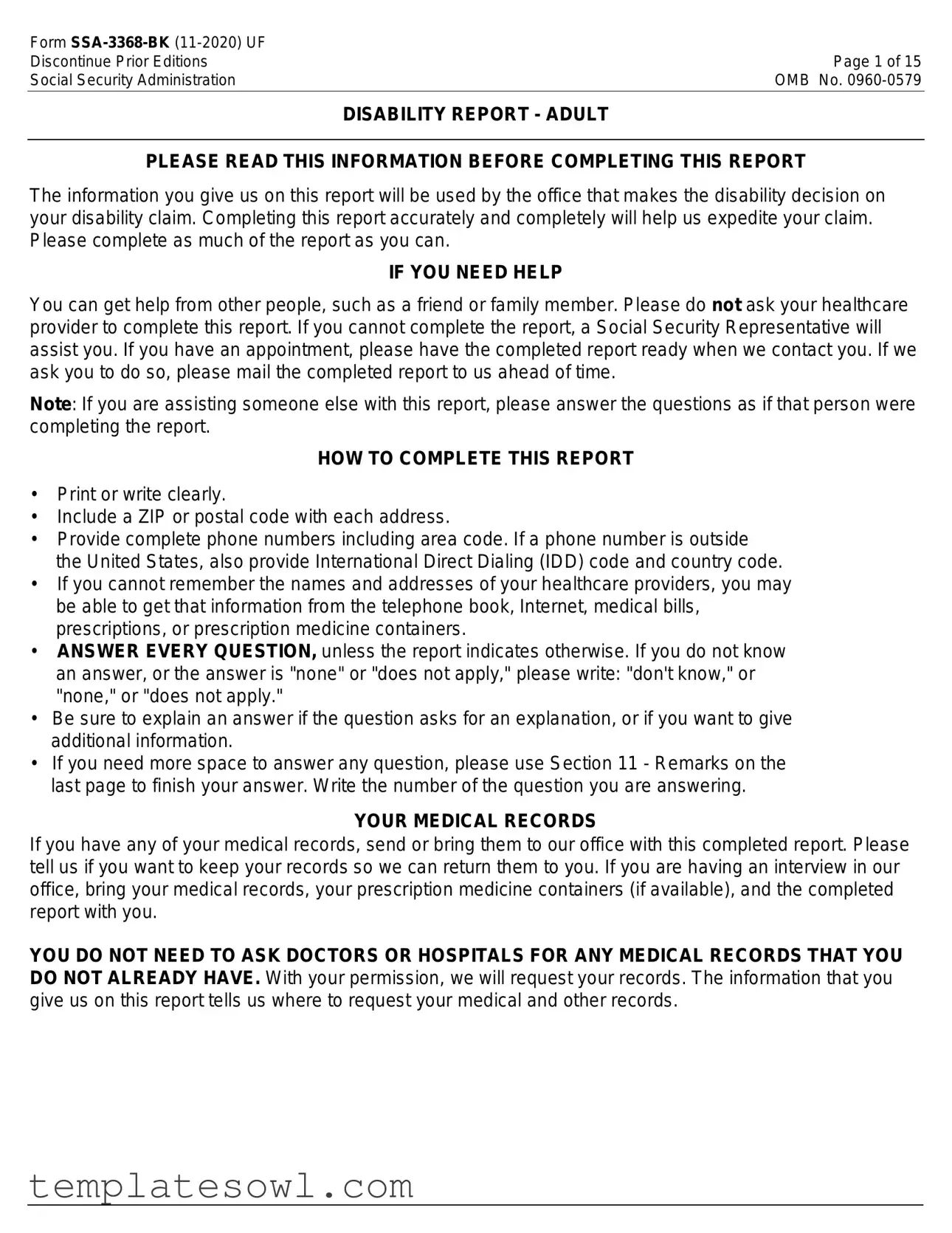


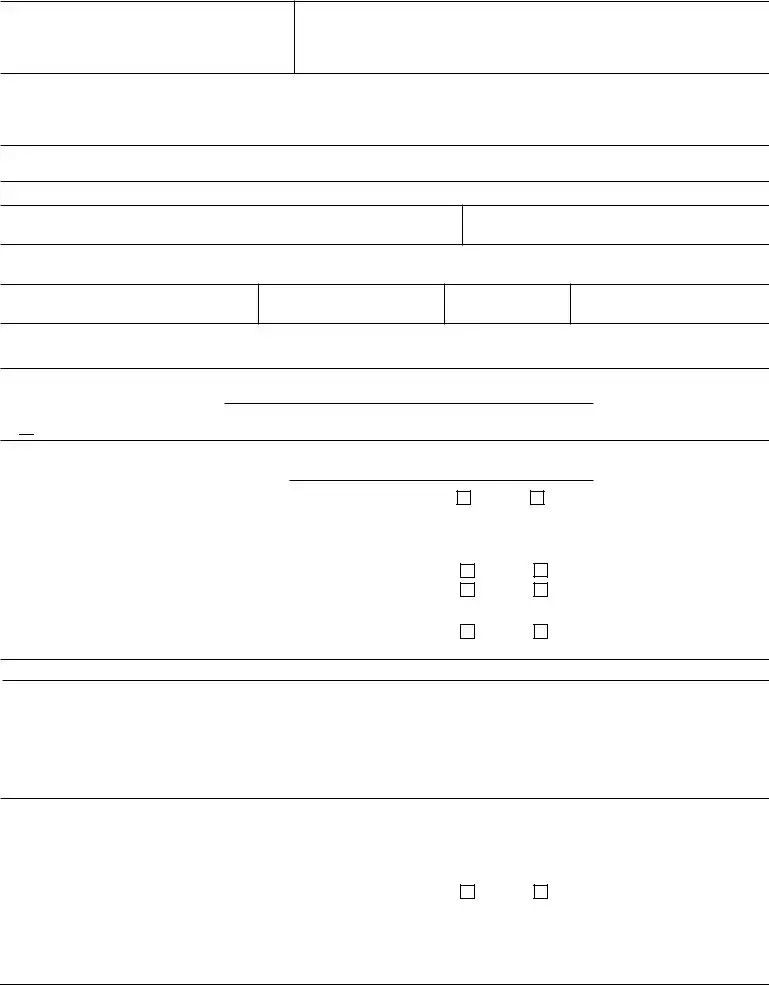

 Check this box if you do not have a phone or a number where we can leave a message.
Check this box if you do not have a phone or a number where we can leave a message. 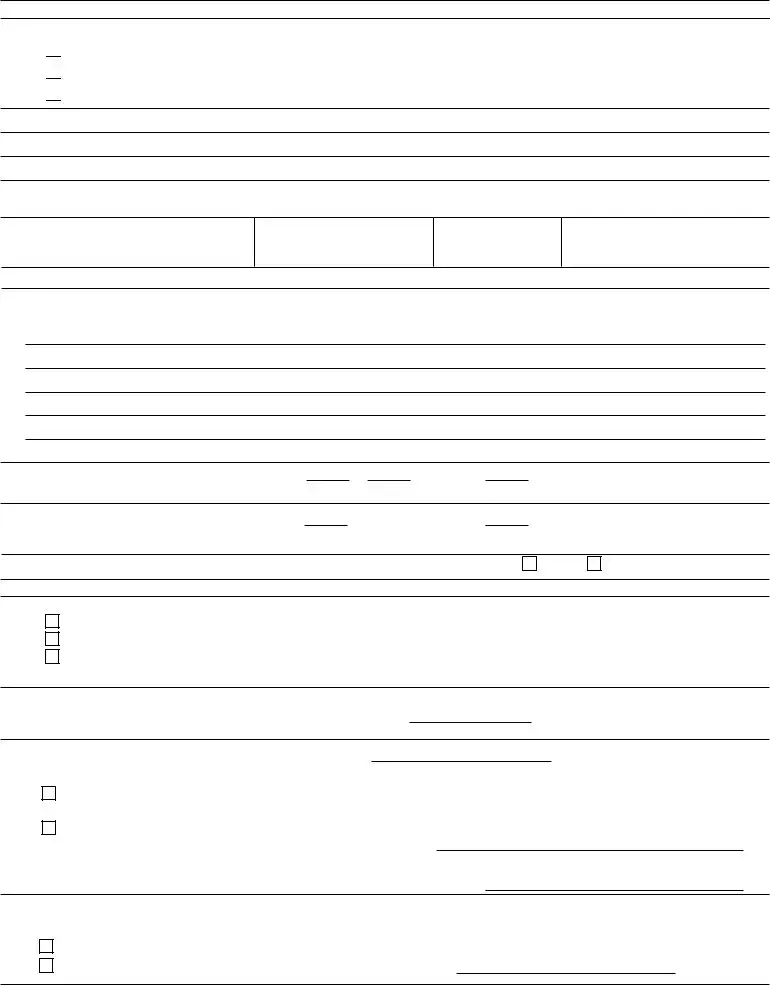

 The person who is applying for disability. (Go to Section 3 - Medical Conditions)
The person who is applying for disability. (Go to Section 3 - Medical Conditions)
 The person listed in
The person listed in 
 Someone else (Complete the rest of Section 2 below)
Someone else (Complete the rest of Section 2 below)

 No When did your condition(s) first start bothering you? (month/day/year)
No When did your condition(s) first start bothering you? (month/day/year)
 Yes When did you make changes? (month/day/year)
Yes When did you make changes? (month/day/year)
 Same as
Same as 
 If different from
If different from 
 I had
I had 
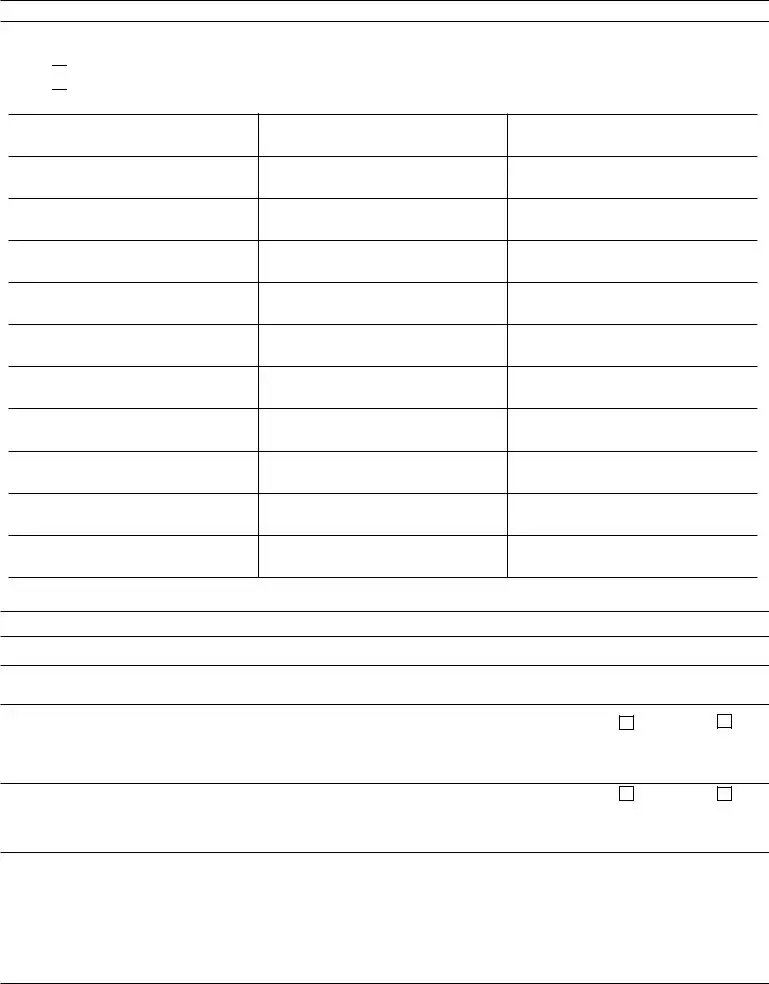
 Yes, (Give the information requested below. You may need to look at your medicine containers.)
Yes, (Give the information requested below. You may need to look at your medicine containers.) 
 No, (Go to Section 8 - Medical Treatment)
No, (Go to Section 8 - Medical Treatment)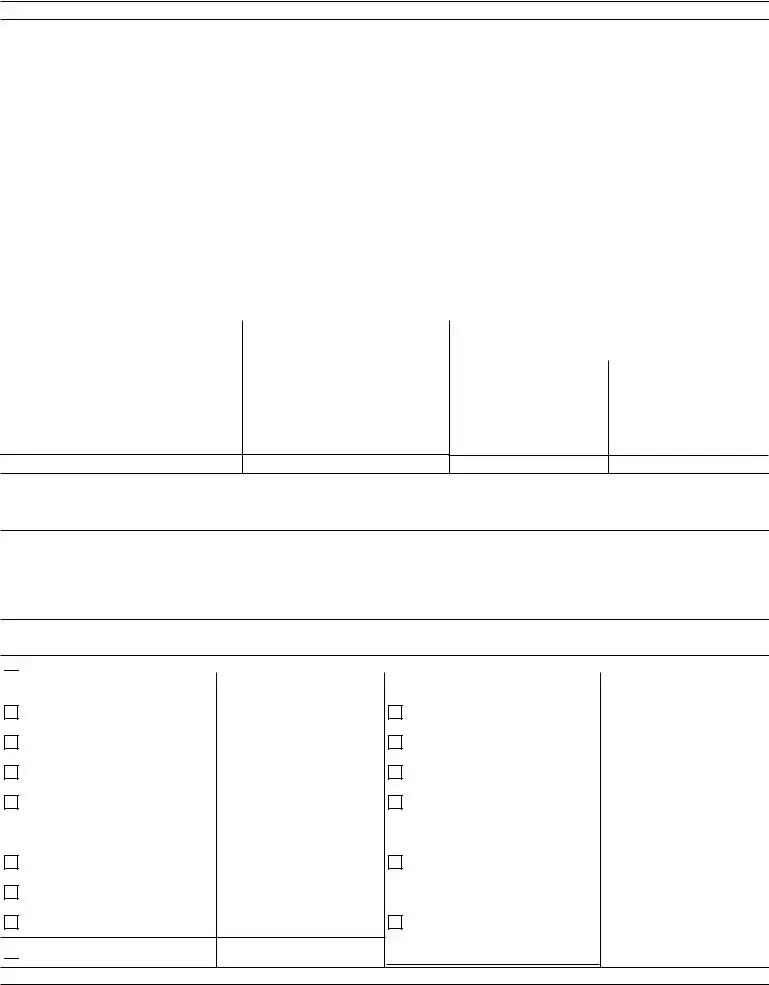

 Check this box if no test by this provider or at this facility.
Check this box if no test by this provider or at this facility.
 Breathing Test
Breathing Test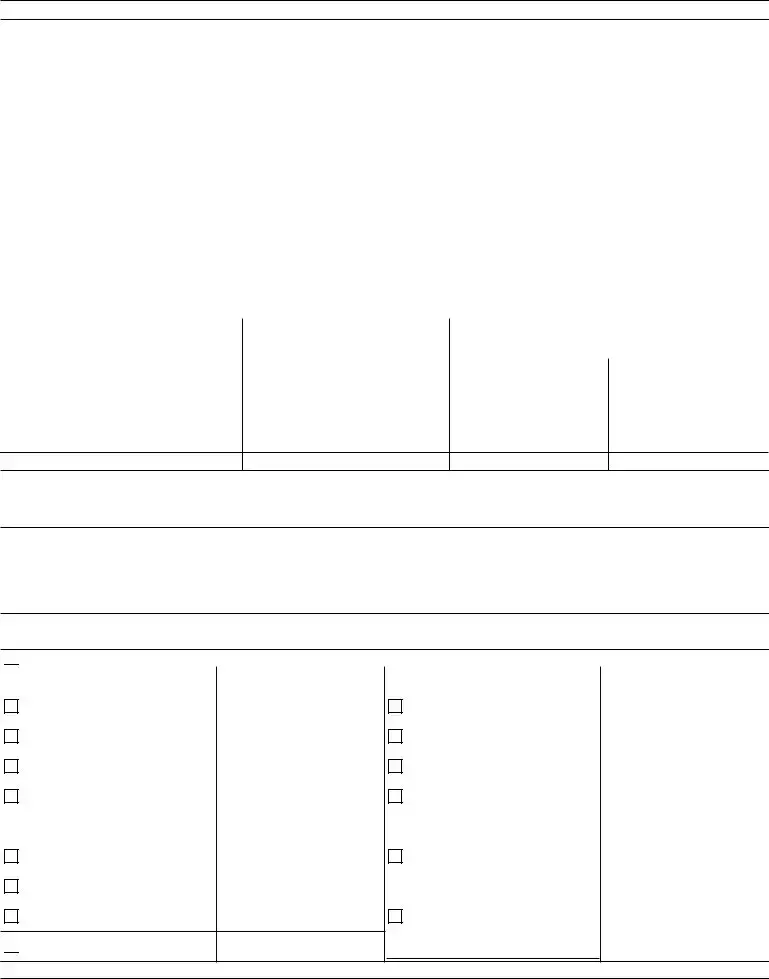


 Breathing Test
Breathing Test